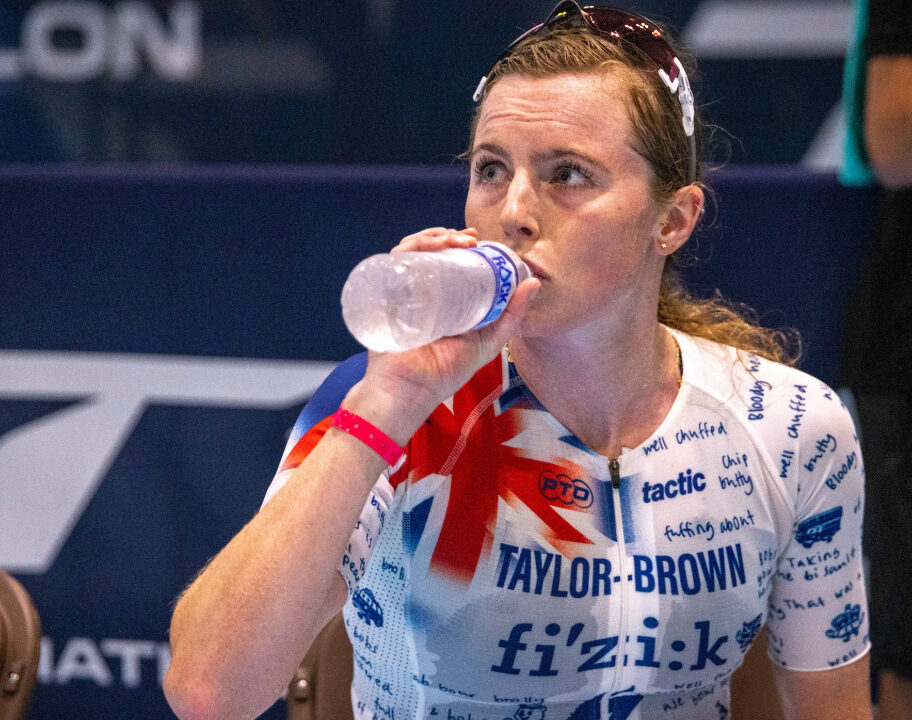Ultra-Processed Foods (UPFs) have been hitting the headlines recently because large population studies* have shown links between consuming a high volume of UPFs and a range of not-so-great sounding health outcomes ranging from obesity and heart disease to higher risk of certain cancers and even early death.
For triathletes and other endurance sports enthusiasts, leading a pretty healthy lifestyle generally comes with the territory. If you want your body to perform – you’ve got to treat it well. Which means most of us aren’t regularly having the classic ultra-processed foods in excess. But what might be concerning is the fact that sports-specific products like energy gels and protein products are also classified as UPFs.
Between increased energy needs, the necessity of easily absorbed fuel during training and convenient on the go recovery nutrition. UPFs might actually be featured far more often in our diets than we think. So, as endurance athletes, should we be concerned about our intake of ultra-processed foods through sports nutrition? We spoke to Performance Nutritionist Harvey Fortis from Total Endurance Nutrition to find out more about UPFs and whether athletes need to worry about their intake of ultra-processed foods.

What actually are Ultra-Processed Foods?
First, it’s important to cut through all the media noise and truly understand what we mean by Ultra-Processed Foods. “The term ‘ultra-processed’ comes from the NOVA classification system, a framework used by public health researchers to group foods based on the extent and purpose of processing,” Harvey explains.
“According to NOVA, ultra-processed foods are industrial formulations that typically contain five or more ingredients. These include not just the basics like sugar, salt, or fat, but also a variety of additives such as emulsifiers, flavourings, colourings, artificial sweeteners, preservatives, and stabilisers, many of which you wouldn’t find in a home kitchen.”
“These products are designed to be convenient, palatable, and shelf stable. That’s why they dominate supermarket shelves. They include things like crisps, soft drinks, chocolate bars, flavoured yoghurts, instant noodles, frozen pizzas.”
“But, importantly for this conversation many of the sports-specific products used by athletes: energy gels, recovery drinks, protein bars, and electrolyte mixes are also classified as ‘Ultra-Processed’.”
Processed vs Ultra-Processed – what’s the difference?
“It’s important to clarify that not all processed foods are ultra-processed,” Harvey highlights. “Processing includes everything from cooking and freezing to fermenting and grinding.”
“Ultra-processed foods typically involve a higher degree of formulation, often with additives that serve to enhance flavour, texture, or preservation rather than adding nutritional value.”
So what’s the issue with Ultra-Processed Foods? A look at the research that’s fuelled the media fire
Crisps, chocolate, instant noodles… these things have been on supermarket shelves for years. So why the sudden rush of concerning headlines about them? It largely comes down to studies confirming what for the most part we’ve known for a while – these types of food in excess can have a negative impact on your health.
“Large population studies have shown consistent links between high intakes of ultra-processed foods and negative health outcomes. This includes increased risks of obesity, type 2 diabetes, heart disease, certain cancers, and even early mortality.”
That sounds pretty alarming, but Harvey points out these studies have mainly focused on general populations whose lifestyles are quite different to your typical keen triathlete, runner or cyclist.
“Most of this research is observational, and done in general or populations with health conditions. Often sedentary individuals, consuming diets low in nutrient-dense whole foods and excessive in sugar, salt, and fat.”
“That’s a very different picture from the average athlete who trains most days, maintains high energy expenditure, and is often much more mindful of their overall diet quality.”
Not all UPFs are equal
“It’s also important to understand that the health risks of UPFs are often linked to their broader nutritional profile: high energy density, low fibre, added sugars, and unhealthy fats. Rather than the fact they’re processed per se.”
“In other words, a sugary soda and a protein bar might both be “ultra-processed”, but they are not nutritionally equal.”
Does ‘ultra-processed’ always mean ultra-bad for you? Why we shouldn’t paint all UPFs with the same brush
And it’s precisely because of that distinction and nutritional context, that it’s not as simple as ultra-processed always equals ultra-bad. “This is where nuance matters,” Harvey explains. “The current media narrative often paints all ultra-processed foods with the same brush. But in reality, the UPF category is extremely broad and includes foods with very different nutrient profiles, ingredient lists, and health impacts. It also does not consider the context or timing of foods.”
“Yes, many UPFs are highly refined, low in nutritional value, and easy to overconsume. But others, especially those designed with performance, recovery, or medical nutrition in mind, can serve a purpose and even enhance health outcomes. For example, fortified plant milks, fibre-rich wholegrain cereals, and sports-specific products can be ultra-processed. But they still offer functional, beneficial roles in certain diets.”
“The problem isn’t so much that UPFs exist: it’s perhaps more about how we use them. A diet based mostly on ultra-processed foods is very likely to be nutritionally poor. But strategic use, particularly by active individuals with high energy needs and demanding training loads, is a different story.”
Ultra-Processed Foods for athletes – should we be concerned?
As Harvey has already pointed out, a lot of the research that has sparked the media buzz around UPFs has been based on general populations – and often pretty sedentary individuals. And as our non-triathlon friends and co-workers will always be keen to point out after we give them a full run down of all our ‘crazy’ training activities in response to a simple ‘how was your weekend’ enquiry on a Monday morning. Us age-group athletes are anything but normal!
“Athletes, and highly active amateurs are not metabolically average. Regular training improves insulin sensitivity, enhances glucose uptake in muscles, increases glycogen storage, and generally boosts the body’s ability to handle carbohydrates and calories.”
“In fact, for athletes, the very characteristics of UPFs that make them problematic for the general population – fast absorption, high energy density, low fibre – are often precisely what makes them useful ‘fuel’ around training.”
For athletes ‘ultra-processed’ sports nutrition can sometimes be the optimal choice
In general, we get told to focus on incorporating whole foods into our diets. Which is great. But doing that right before a tough session or in the middle of a race is just asking for GI issues [cross link to GI piece]. Sports nutrition is processed by design.
“When you’re racing, doing high-intensity intervals, or fueling a multi-hour ride or run, you don’t want high-fibre or slower digesting foods. You want easily absorbed carbohydrates that can be rapidly converted into usable energy. That’s why energy gels, chews, sweets and carb drinks are formulated the way they are. They are not trying to be whole foods; they are trying to deliver energy.”
“Similarly, after a tough session, many athletes struggle with their appetite. A recovery shake or a bar are technically ultra-processed. But they will provide the required protein, carbohydrates, and electrolytes an athlete needs to support their recovery in a quick, convenient format.”
“Trying to eat a whole meal immediately post-exercise isn’t always realistic or practical, so this is one moment where processed sports nutrition is not just useful, but can actually be the best choice!”
But what about “you can’t out run a bad diet” – should athletes still think about their overall diet quality?
While ultra-processed foods can have a place in an athlete’s diet, it’s still important to have a well-balanced diet. As Lionel Sanders recently highlighted after his Type 2 Diabetes scare – even professional athletes training multiple times a day, every day – can be impacted by poor nutrition.
“Athletes may have greater ‘metabolic flexibility’,” says Harvey, “but they are not immune to the consequences of poor nutrition.”
“Relying too heavily on low-quality UPFs, especially outside of training contexts can impact recovery, immunity, gut health, and long-term wellbeing. Over time this may then lead to poorer health outcomes, such as the risk of nutrient deficiencies.”
Use UPFs wisely
“While the targeted use of UPFs around exercise is often appropriate for athletes, it’s still essential to anchor your everyday nutrition in whole, minimally processed foods. Think colourful vegetables and fruits, whole grains, legumes, nuts, seeds, quality proteins and healthy fats.”
“Doing so helps to support everything that underpins your athletic performance. Energy availability, tissue repair, immune function, hormone balance, gut function and overall health.”
What can you do if you’re concerned about how processed your sports nutrition is?
As Harvey has outlined, for highly active athletes – age-groupers and pros alike – there are contexts where using ‘ultra-processed’ sports nutrition makes sense. But if you want to explore alternatives – whether that’s to reduce your overall UPF intake, to keep costs down (those energy gels don’t come cheap!) or because sports nutrition tends to upset your stomach. You do have options, especially for easier training days.
“If you’re someone who’s wary of relying too heavily on processed products, it’s helpful to differentiate between training nutrition and daily nutrition. Using an energy gel or electrolyte drink during a race doesn’t mean your entire diet is ultra-processed. It means you’re being practical and strategic.”
“That said, there are great ‘real food’ options that can be used for fuelling and recovery. Especially for lower-intensity training days, longer sessions where you have time to chew and digest, or when you’re not pushing to the limit.”
“Some athletes use bananas, dates, rice cakes with jam, or homemade energy bars for mid-ride or mid-run fuel. Others rely on smoothies made with fruit, yoghurt, and oats after training instead of processed shakes. These are all valid strategies, as long as they don’t compromise fueling or recovery because of convenience, appetite, or GI comfort.”
“But in scenarios like racing, very hot conditions, or high-intensity intervals. Processed products may remain the superior option because of their digestibility, portability, and fast action.”
Could honey be an energy gel alternative?
And for those scenarios where whole foods aren’t digestible enough, but you really don’t want to use gels. Fellow TEN nutritionist, Dr Emily Jevons, recently posted a really insightful graphic on Instagram explaining some recent research from Harvey (Fortis et al; 2025 PMID: 40675563) exploring whether honey could ‘bee’ (sorry, couldn’t help ourselves!) a viable alternative to energy gels. Take a look at the post here!
The verdict on UPFs for athletes
“The messaging around ultra-processed foods often lacks context, and athletes have been caught in the crossfire. While most warnings about UPFs are grounded in real concerns for public health, they are not necessarily applicable to active individuals with high energy demands and performance goals.”
“I often say that I wouldn’t expect a coach or athlete to look to the UK government guidelines for physical activity (150 min of moderate intensity activity), to prescribe training plans for endurance athletes. So, why would we look to dietary advice that is not specific to the population in question?”
“That doesn’t mean UPFs get a free pass. They should be used strategically, not habitually. But neither should they be feared. When chosen with purpose, particularly around training or contributing to diets for those with high energy requirements, ultra-processed sports products can be an effective, evidence-based part of a well-rounded nutrition plan.”
“The foundation of any athlete’s diet should still be whole, colourful, varied, and minimally processed. But there’s no shame in reaching for a gel during your marathon, or a shake after your long run or an energy bar as a snack to contribute to energy demands. In fact, that may be the smartest choice you can make.”
“So let’s move past the fear and look at the big picture: quality matters, timing matters, and context is everything.”
Get in touch with the Total Endurance Nutrition team if you want to learn more and get tailored, individual advice to help you nail your nutrition.
*References
Association between ultra-processed foods and risk of cancer: a systematic review and meta-analysis (2023) Front. Nutr. 10:1175994
Premature mortality attributable to Ultraprocessed food consumption in 8 countries (2024), BMJ 2024;385:e078476
Spotlight on UPFs: NIH explores link between ultra-processed foods and heart disease











